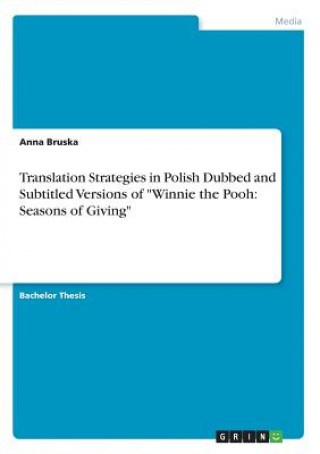
Code: 13515414
Translation Strategies in Polish Dubbed and Subtitled Versions of Winnie the Pooh
by Anna Bruska
Bachelor Thesis from the year 2014 in the subject Film Science, grade: 4,00, Kazimierz Wielki University, language: English, abstract: This thesis is focused on the subject of translation strategies in Polish dubbed and subtitled ... more
- Language:
 English
English - Binding: Paperback
- Number of pages: 40
Publisher: Grin Publishing, 2016
- More about this

42.56 €
RRP: 43.41 €
You save 0.85 €

In stock at our supplier
Shipping in 15 - 20 days
You might also like
-

What Now, Adam?
13.41 € -16 % -

Sri Lanka at the Crossroads of History
35.10 €
Give this book as a present today
- Order book and choose Gift Order.
- We will send you book gift voucher at once. You can give it out to anyone.
- Book will be send to donee, nothing more to care about.
More about Translation Strategies in Polish Dubbed and Subtitled Versions of Winnie the Pooh
You get 107 loyalty points
 Book synopsis
Book synopsis
Bachelor Thesis from the year 2014 in the subject Film Science, grade: 4,00, Kazimierz Wielki University, language: English, abstract: This thesis is focused on the subject of translation strategies in Polish dubbed and subtitled versions of "Winnie the Pooh: Seasons of Giving". It is divided into two chapters: each of them presents another point of the issue. In the first chapter a general idea of an audiovisual translation is described. It is explained what is hidden in this process and in what ways can the transmission be proceeded. Next, there is an answer to a question what is translation exactly. AVT is represented by three different categories: intralingual, interlingual and intersemiotic; each category has its own modes.§§Intralingual Audiovisual Translation is represented by live subtitling (in broadcast, programmes, interviews), subtitling for the deaf and the hard-of-hearing (more punctuations on screen, precise descriptions in a form of subtitles), audio description for the blind (explanations and descriptions in a form of sound). Interlingual Audiovisual Translation is connected with a huge process that consists in analysing a message in a first language and its generation in another language. This kind of translation is divided into two groups: revoicing and subtitling that are clarified. A significant is the beginning of both subtitling and dubbing, how they came into being and in what way their later development influenced on technology.§§The next point of the thesis is a brief comparison of subtitling and dubbing by presenting their translation elements. This differentiation leads to show main advantages and disadvantages of those two types of audiovisual translation. This brings us to a description of subtitling which has several stages to be proceeded. This process is limited by some restrictions such as an exposition time or a subtitle's general appearance. The most culminating point in this chapter is an enumeration of, firstly, strategies in subtitling, secondly, in dubbing. There are ten main subtitling procedures: extension, paraphrase, transfer, imitation, transcription, dislocation, condensation, decimation, deletion and finally, resignation - all described in detail along with three extra examples of the strategies. It is said how the whole process of dubbing step by step looks like, what a synchronism is and what types of the synchronism are distinguished. There is a variety of dubbing strategies; in this thesis seven of them are presented.
 Book details
Book details
Book category Books in English The arts Film, TV & radio Films, cinema
42.56 €
- Full title: Translation Strategies in Polish Dubbed and Subtitled Versions of Winnie the Pooh
- Subtitle: Seasons of Giving
- Author: Anna Bruska
- Language:
 English
English - Binding: Paperback
- Number of pages: 40
- EAN: 9783668250055
- ISBN: 3668250057
- ID: 13515414
- Publisher: Grin Publishing
- Weight: 64 g
- Dimensions: 210 × 148 × 3 mm
- Date of publishing: 07. July 2016
Trending among others
-

Mean Girls: The Burn Book Hardcover Ruled Journal
15.52 € -22 % -

Jonesy
11.69 € -18 % -

Alien Next Door
11.59 € -35 % -

Hollywood Babylon
8.67 € -23 % -
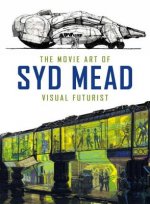
Movie Art of Syd Mead: Visual Futurist
38.12 € -14 % -
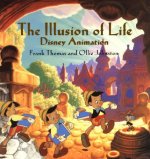
The Illusion of Life : Disney Animation
57.89 € -3 % -

Harry Potter: Page to Screen: Updated Edition
70.50 € -15 % -

The Art of Tangled
28.74 € -24 % -

Story
30.25 € -13 % -

Adventure Time - The Enchiridion & Marcy's Super Secret Scrapbook
22.99 € -18 % -

Into The Woods
11.29 € -28 % -

Adventures In The Screen Trade
13.31 € -28 % -

James Bond Movie Encyclopedia
29.45 € -17 % -

Film in Five Seconds
15.22 € -28 % -

Alien - Augmented Reality Survival Manual
28.74 € -18 % -

Maya Deren
40.24 € -

Harry Potter Pensieve Memory Set
27.13 € -20 % -

Art of Frozen
31.46 € -10 % -

Alfred Hitchcock. The Complete Films
32.17 € -20 % -

I Am Not Your Negro
11.39 € -20 % -
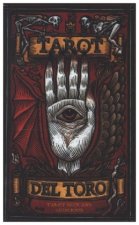
Tarot del Toro
23.19 € -28 % -

Oxford History of World Cinema
47.50 € -

Art of Frozen 2
28.74 € -21 % -

Alien Covenant: David's Drawings
42.06 € -16 % -

The Animator's Survival Kit
37.62 € -1 % -

Alien: The Blueprints
29.65 € -22 % -

Lighting for Cinematography
32.37 € -14 % -

Alien
35.10 € -28 % -

Art and Making of Alien: Covenant
34.39 € -18 % -

Spiderman Into the Spider-Verse
34.79 € -21 % -

Horror Cinema
20.47 € -20 % -

Animator's Survival Kit
40.14 € -28 % -

Alien: The Archive - The Ultimate Guide to the Classic Movies
38.02 € -22 % -

The Art of Princess Mononoke
31.16 € -12 % -

The Celestine Prophecy
11.39 € -20 % -

Advanced Techniques for the Modern Drummer - Jim Chapin
20.87 € -19 % -

Black Holes: The Reith Lectures
8.56 € -27 % -
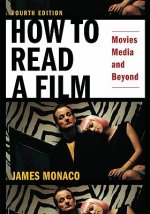
How to Read a Film
38.73 € -

Dark Knight Trilogy
20.37 € -27 % -

Donnie Darko Book
14.82 € -26 % -

Character Animation Crash Course!
36.81 € -

Fantastic Mr. Fox
27.63 € -22 % -

Harry Potter: A Pop-Up Guide to Diagon Alley and Beyon
65.06 € -13 % -

Film Noir
20.97 € -18 % -
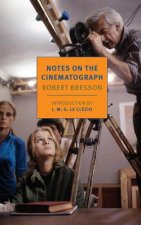
Notes On The Cinematograph
11.89 € -30 % -

Lynch on Lynch
17.64 € -16 % -

Forefathers' Eve
30.45 € -18 % -

Movie Quiz Book
21.48 € -

The Stanley Kubrick Archives
20.27 € -9 %
Collection points Bratislava a 2642 dalších
Copyright ©2008-24 najlacnejsie-knihy.sk All rights reservedPrivacyCookies


 15549 collection points
15549 collection points Delivery 2.99 €
Delivery 2.99 € 02/210 210 99 (8-15.30h)
02/210 210 99 (8-15.30h)